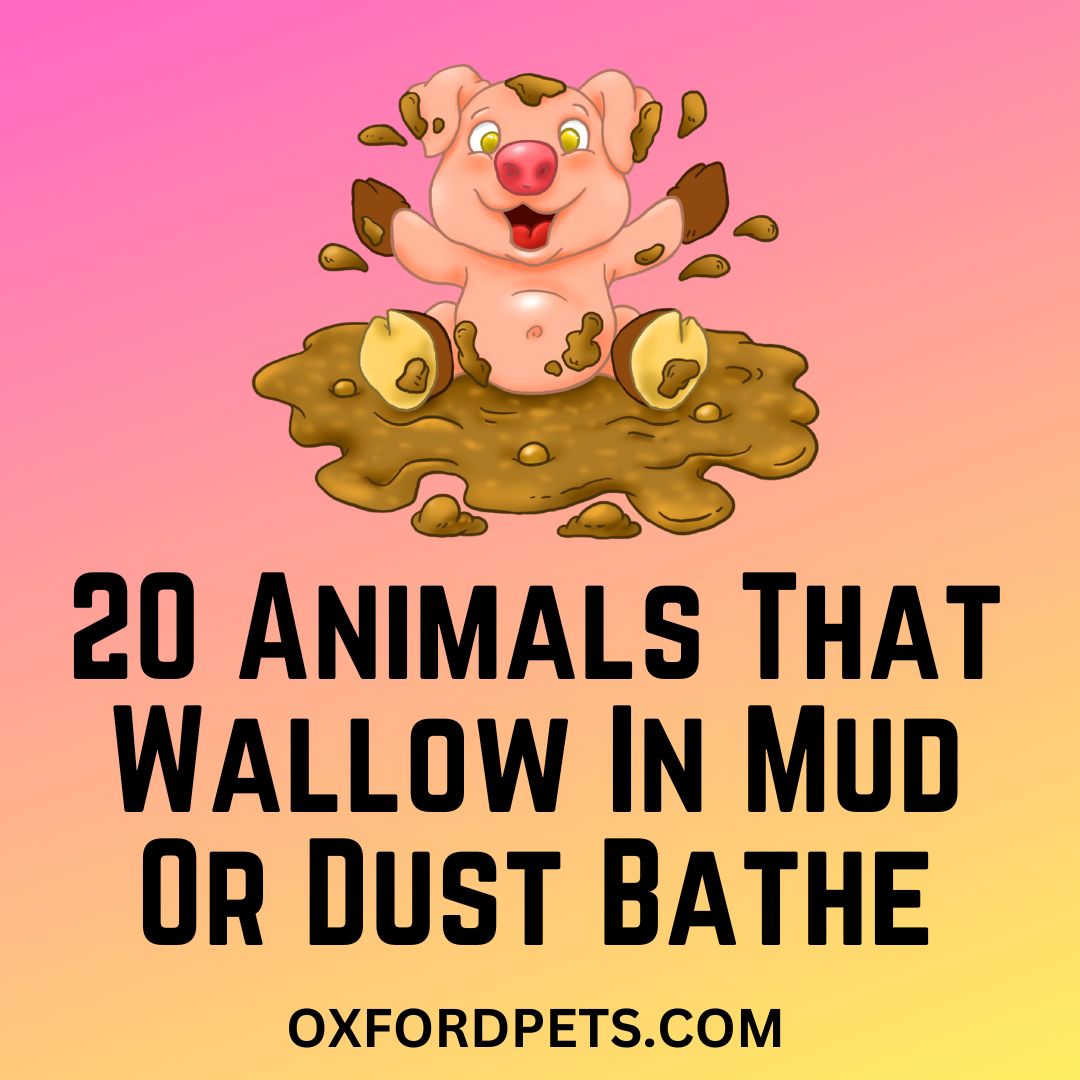Wallowing in mud is a common behavior observed among many different species of animals. From elephants to pigs, wallowing in mud is a natural behavior that serves a variety of purposes, including regulating body temperature, protecting the skin from parasites, and providing a source of moisture during dry periods.
Contents
What is the process of wallowing?
The process of wallowing involves finding an area with suitable mud or water and then lying or rolling in it. This helps to coat the animal’s skin with a layer of mud or water, which provides a cooling effect as it evaporates.
The mud or water can also help to protect the skin from sunburn and biting insects. In some cases, animals may also ingest mud or water during wallowing to help regulate their internal temperature and hydration levels.
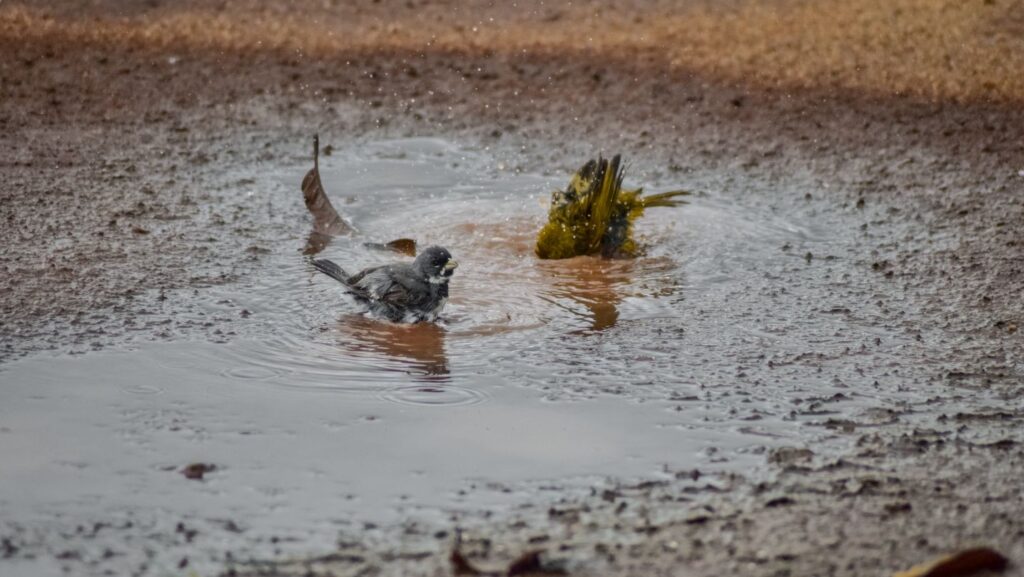
20 Animals that are known to wallow in mud:
- African elephant – African elephants often use mud to protect their skin from the sun and insect bites. Elephants use mud to protect their skin from the sun and insect bites. Mud also helps to regulate their body temperature and provides a source of moisture during dry periods.
- Warthog and Wild boar – Warthogs are known for their mud baths, which help to keep their skin cool and prevent parasites from attaching. Whike, Wild boars use mud to regulate their body temperature and protect their skin from parasites.
- Rhinoceros – Rhinoceroses also use mud to keep cool and prevent sunburn. Black rhinoceroses use mud to protect their skin from the sun and to keep cool.
- Hippopotamus – Hippos are well-known for their love of water, and they often spend hours wallowing in mud to regulate their body temperature and protect their skin.
- Buffalo– African buffalos are known to roll in mud to protect their skin from biting insects. Water buffalos use mud to protect their skin from the sun and to regulate their body temperature.
- Sloth bear – Sloth bears use mud to cool themselves down during hot weather.
- Capybara – Capybaras often roll in mud to protect their skin from parasites.
- White-tailed deer – White-tailed deer will sometimes roll in mud to mask their scent from predators.
- Moose – Moose have been observed rolling in mud to protect their skin from biting insects.
- Ostrich – Ostriches will sometimes use mud to keep their feathers clean and free of parasites.
- Red river hog – Red river hogs use mud to cool themselves down and protect their skin from parasites.
- Camels – Camels are known to roll in sand and dust to help remove parasites and dead skin from their fur. This behavior also helps to keep their skin dry and cool.
- Pigs – Pigs enjoy wallowing in mud, which helps to regulate their body temperature and protect their skin from sunburn and biting insects.
- Horses – Horses sometimes roll in dust or dirt to keep their coats clean and shiny. This behavior also helps to remove excess oils and sweat from their skin
- Hyenas – Spotted hyenas roll in dust or dirt to remove excess oils from their skin and to mark their territory with their scent.
- Tapirs – Tapirs are known to roll in mud or water to cool themselves down and protect their skin from parasites.
- Tuatara – Tuatara lizards bury themselves in sand or dirt to help regulate their body temperature and to avoid predators.
- Cranes – Cranes use dust to clean their feathers and remove excess oils.
- Barn swallows – Barn swallows roll in mud to help build their nests. The mud helps to hold the nest together and provides insulation for the eggs.
- Bovids and Bison – Bovids, such as cows and antelopes, use mud to protect their skin from the sun and to regulate their body temperature.Bisons are known to wallow in mud to protect their skin from biting insects and to help remove excess fur during shedding season.
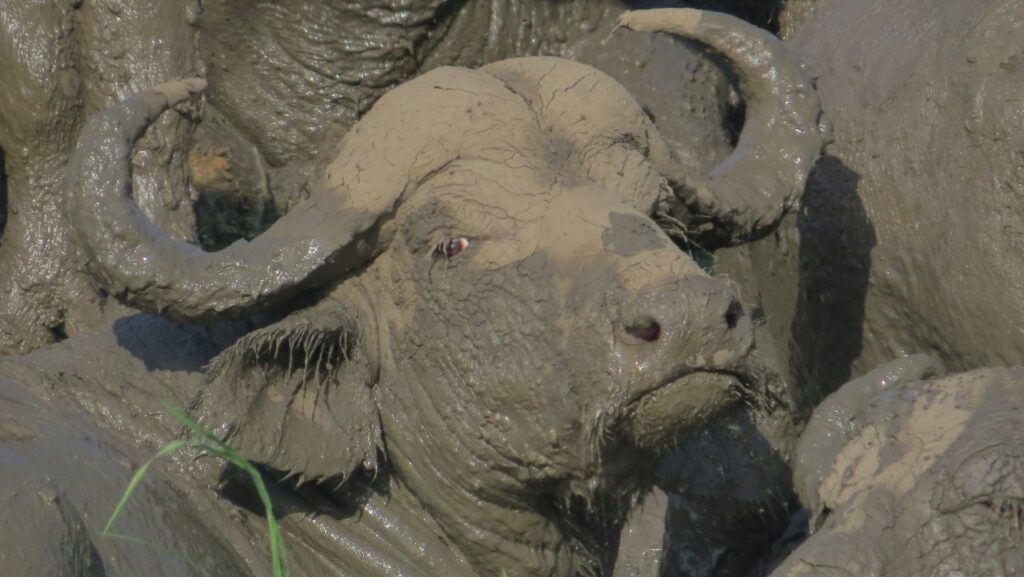
Pros and Cons of Wallowing in Mud:
Benefits to wallowing in mud for animals.
- Thermoregulation – Wallowing helps animals regulate their body temperature, especially in hot weather. The mud or water cools the skin, which in turn cools the animal’s body. it helps to regulate body temperature. When animals are hot, they can roll in mud to cool themselves down.
- Disinfect Wounds – Mud can have antibacterial properties, and it can help disinfect and soothe minor cuts and scrapes on an animal’s skin. By wallowing in mud, animals can help prevent infections and promote faster healing of minor wounds.
- Prevent Ectoparasites – Many ectoparasites, such as ticks and fleas, are repelled by mud. Wallowing in mud can create a protective barrier that prevents these parasites from infesting an animal’s skin or fur.
- Sexual Function Improvement – Some animals use wallowing as a form of social communication or to attract mates. For example, male elephants will cover themselves in mud and then display their newly-acquired coating to females as a sign of their virility.
- Camouflage and Hide from Predators – In some cases, wallowing can help animals blend into their surroundings and hide from predators. For example, some birds will roll in dirt or dust to help camouflage their feathers.
- Extract Nutrients – Some types of mud and soil contain essential minerals and nutrients that animals can extract through wallowing. These nutrients can help support overall health and well-being.
- Sunburn Protection: Mud also provides a layer of protection for the skin, which can help to prevent sunburn and protect against parasites. Additionally, mud can provide a source of moisture during dry periods.
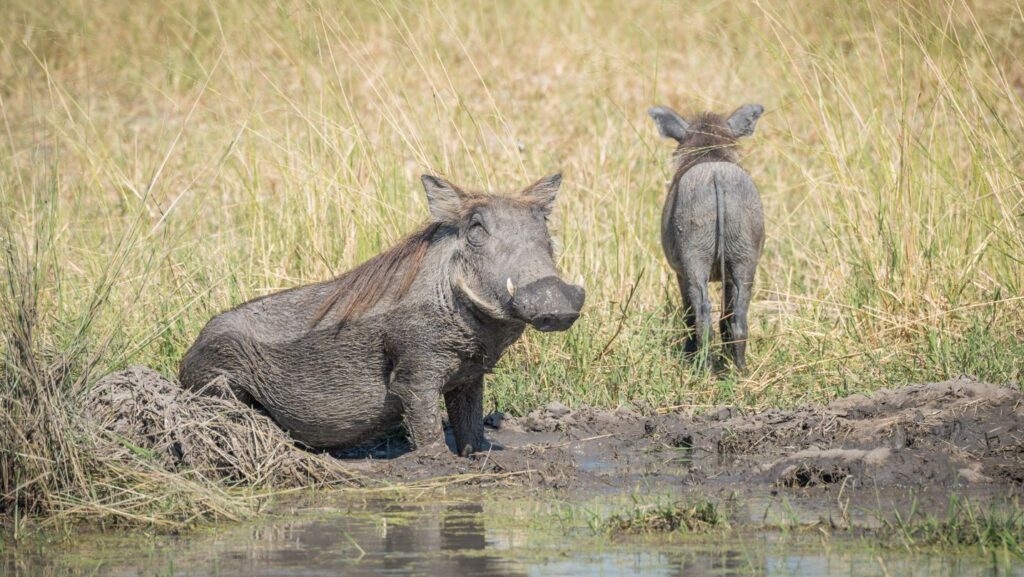
Potential downsides to wallowing in mud.
While wallowing in mud can provide many benefits for animals, there are also some potential disadvantages to consider:
- Skin Irritation – In some cases, the abrasive texture of mud or dirt can cause skin irritation or even abrasions, particularly if the mud is contaminated with foreign objects or sharp rocks.
- Increased Risk of Infections – While wallowing can help prevent infections, it can also increase the risk of certain types of infections, particularly if the mud or water is contaminated with harmful bacteria or parasites.
- Increased Exposure to Toxins – Animals that wallow in polluted water or mud may be exposed to toxins and pollutants that can have negative health effects over time.
- Risk of Getting Stuck – In some cases, animals may get stuck in deep mud or become trapped in muddy areas, which can be dangerous or even fatal.
- Decreased Mobility and Predation – If the mud or water is particularly deep or sticky, it can make it harder for animals to move around, which can impact their ability to find food and avoid predators.
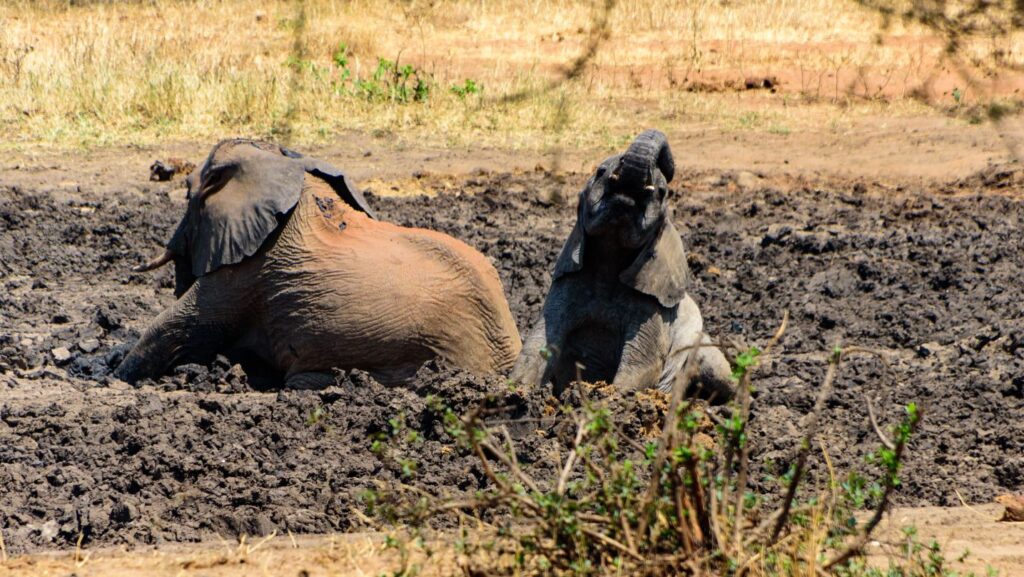
Dust Bath Vs Mud Wallowing:
While both dust bathing and mud wallowing are common behaviors observed in many different animals, there are some differences between the two.
Dust bathing involves rolling in dust or dirt to clean the skin and remove excess oils. This behavior is often observed in birds and small mammals, such as rodents. Dust bathing is a dry behavior and does not provide the same cooling benefits as mud wallowing.
Mud wallowing, on the other hand, involves rolling in mud or water to cool the body and protect the skin from parasites. Mud wallowing is more commonly observed in large mammals, such as elephants, hippos, and pigs.
While mud wallowing can provide a source of moisture during dry periods, it also carries the risk of skin infections if the mud is contaminated with harmful bacteria.
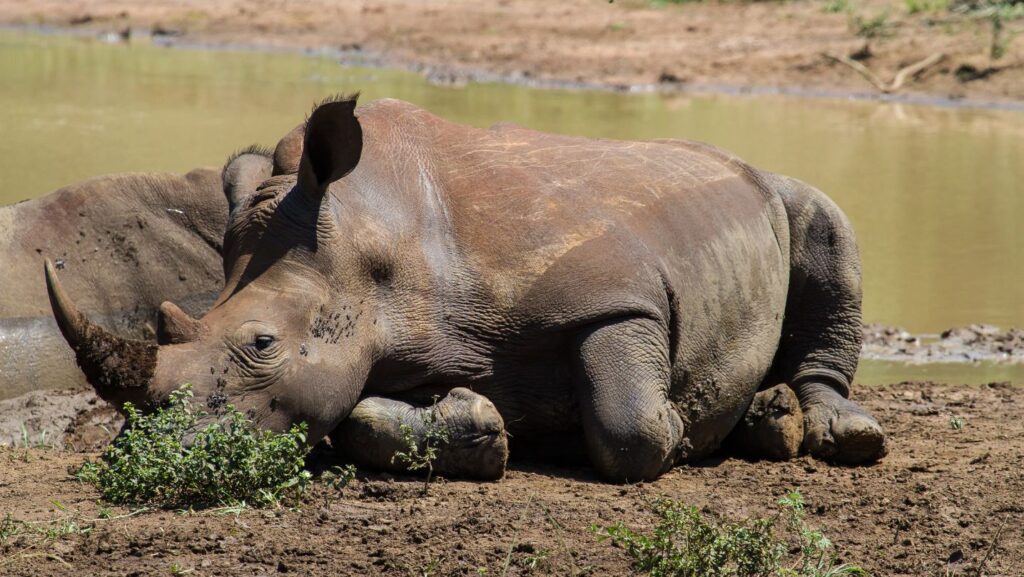
What is wallowing in animal husbandry?
In animal husbandry, wallowing refers to a behavior exhibited by some animals, particularly pigs and some other livestock, where they roll in mud or water to help regulate their body temperature and protect their skin from the sun and biting insects.
Summary
In conclusion, dust bathing and mud wallowing are natural behaviors observed in many different species of animals. These behaviors serve a variety of purposes and are adapted to meet the specific needs of each species.
Overall, wallowing is an important behavior that provides a range of benefits for animals. By rolling in mud or water, animals can regulate their body temperature, prevent infections, and protect themselves from predators and parasites, among other benefits.
